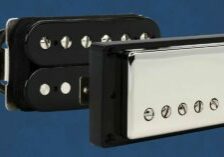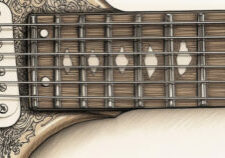Introduction: Understanding the Importance of Troubleshooting Your Amp
As an amazing guitar player, your amplifier is one of the most important pieces of equipment you own. It’s what allows you to project your sound to an audience and can make or break a performance. There are so many knobs and settings that every musician can find their own sound or tone. However, like any piece of tech, guitar amps can experience problems that mess up performance. That’s why it helps to know how to troubleshoot your amp and fix common issues.
By understanding how to troubleshoot your amp, you can save yourself time and money by fixing minor problems before they become major ones. Additionally, knowing how to diagnose and fix common issues will help you maintain your amplifier’s optimal performance and extend its lifespan.
One quick word of advice that you’ve probably seen 1,000 times:
You can kill yourself working on an unplugged guitar amp.
Guitar amps that use tubes have capacitors that can hold a high voltage charge even after the amp has been unplugged. So you have to be careful of when you take the cover up and start touching items. Here is a good article on how to safely work on a guitar amp.
Common Problems with Amplifiers: Identifying the Symptoms
Before you can begin troubleshooting your amp, it’s essential to identify the symptoms of common problems. Some of the most common issues include distorted sound, no sound at all, hum or buzz, and overheating. Distorted sound can be caused by a variety of factors, including faulty tubes or speakers, while no sound at all may be due to a blown fuse or loose connection.
Hum or buzz is often caused by grounding issues or interference from other electrical devices in the room. Overheating can occur when an amplifier is pushed too hard for too long or when there is insufficient ventilation.
Checking the Power Supply: Ensuring Proper Voltage and Current
Check the voltage of the amp using a multimeter. If the voltage is too high or too low, it can cause damage to the device or prevent it from working altogether. If the current is too high, it can overload the device and cause it to malfunction. I would recommend watching some videos on how to do this if you are new to using a multimeter.
Inspecting the Tubes: Diagnosing Tube-Related Issues
Tubes are an essential component of many amplifiers, and they can be a common source of problems. If you notice that your amplifier is producing a distorted or weak sound, it could be due to faulty tubes. To diagnose tube-related issues, you’ll need to inspect the tubes for signs of wear or damage. Look for cracks, discoloration, or other signs of wear and tear.
Testing the Speakers: Verifying Speaker Functionality
If you’re experiencing issues with your amplifier’s sound quality, it could be due to problems with the speakers. To test the speakers, disconnect them from the amplifier and use a multimeter to check their resistance. If the resistance is too high or too low, it could indicate a problem with the speaker’s wiring or cone.
Cleaning and Maintenance: Preventing Future Problems
Regular cleaning and maintenance can help prevent future problems with your amplifier. Dust and debris can accumulate inside your amp, causing overheating and other issues. Use compressed air to blow out any dust or debris from inside your amplifier regularly. Additionally, check all connections and cables for signs of wear or damage.
Seeking Professional Help: When to Call a Technician
While many common problems with amplifiers can be fixed at home, some issues require professional help. If you’re not comfortable working on your amplifier or if you’ve tried troubleshooting without success, it’s time to call in a technician. A professional technician can diagnose and fix more complex issues that may be beyond your expertise.
Conclusion: Keeping Your Amp in Top Shape for Optimal Performance
By understanding how to troubleshoot your amp and diagnose common problems, you can keep your amplifier in top shape for optimal performance. Regular cleaning and maintenance can help prevent future problems, while seeking professional help when necessary can save you time and money in the long run. With these tips in mind, you’ll be able to keep your amplifier performing at its best for years to come.





